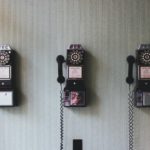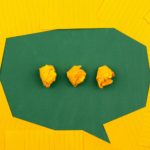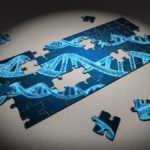
On the second day of classes this summer, we discussed a paper from Graham & Roberts on open pedagogy and the “open hub model.” Excited and wanting to be prepared, I had read it the morning of the first day, as part of a trio of papers introducing me into my master’s program. The interesting thing about my notes from this reading now – and perhaps the reason why it was introduced so early in the course – is my decision to focus on the authors’ description of connectivism. Graham & Roberts outline the underpinnings of this learning theory over 8 points. Here is my summary of those points on that day: “Connectivist learning today occurs at the intersection of technology, critical skills and social learning networks. Learning involves knowing how to find and connect the right information, and the right guidance, when needed, to build new knowledge between emerging areas of interest.”
My summery is also supported by the authors’ discussion surrounding the necessary skills needed to “to take advantage of social learning to scaffold individual growth.” Open-educational practices (OEP) can help with some of these skills, but they must be scaffolded and protected to help students understand the significance of entering the outside world and participating in digital learning. So, it would seem from my summary (and I don’t know if I got it right, but it sounds good) that our two courses – 515 and 568 – were perfectly designed to support connectivist learning.
Of course, I didn’t see this connection on this first day – that’s how far I’ve come. Over these 4 weeks we have discussed skills for extracting information at appropriate times, using open-ed platforms, and connected a diverse network of learners and sages to help us build our own learning for our own changing interests. What has also happened in these 23 days, is I have read 43 different journal articles/book chapters, presented twice, and blogged (probably more than was necessary) my way through 11,126 words (not including this post) – I’m exhausted. So, for this final blog, I have chosen to chronologically outline the key that forced me to reflect and consider my journey while crystallizing one persistent truism:
Informed practice is good practice.
Back to Graham & Roberts. In addition to connectivism, I also found the authors description of the four levels of OEP very informative:
Macro: Global level (will I share openly?); Meso: Community/network level (who will I share with?); Micro: Individual level (who will I share as?); Nano: Interactive level (will I share this?)
Having no real experience with social media (or OEP for that matter) in the classroom, sharing information was never considered, and I found this sectioned look eye-opening. Looking back on my personal use of social media, I can see I superficially asked myself these questions of sharing. I had inner-dialogue about using a pseudonym, made decisions about whom to follow, and how much of my life and work to share. Yet this breakdown of levels gives me a clear, jargon-free foundation to include these necessary considerations for my students and with my students – a starting point for the conversation.
Next, we read Understanding and Describing Quantitative Data by C. Lewin with Assessing The Quality Of Mixed Methods Research: Toward A Comprehensive Framework by A. O’Cathain. Lewin gave a comprehension listing of the terminology of quantitative studies. As a result, I started a glossary of terms, which grew with each article we read (and I assume will continue well past this summer). None of these terms were in my vocabulary until that moment, but all will play a role in my understanding and digestion of further research. O’Cathain provided a table and breakdown of the quantitative and qualitative criteria of each “stage of study.” While cumbersome at times, this framework along with Lewin’s definitions have given me a stronger foundation from which to judge articles I read to incorporate into my literature review.
Informed practice is good practice.
Also providing impact was Dr. George Veletsianos. While I may have extended his conclusions, his talk regarding harassment encouraged me to consider how my students will use social media, and the uniqueness of their experiences and interactions in that world. However, it wasn’t this research that affected me, it was the “optional reading.” Houlden & Veletsianos provide a critique of online learning environments and really digest the constructs that underline the premise of “flexible” learning. In addition to assuming all students are autonomous and motivated, online learning brings difficulties with time and space, especially for students with competing life priorities. While my current school requests that all students have a laptop, and I began incorporating more online components over the last two years, I had never considered the implications of asking all students to be a part of this environment. How to navigate online environments and the executive functioning skills needed to cope with this style of learning (planning, organization, self-reliance, initiative) will be something that I will need to dig into the literature to better understand and influence my classroom routines.
Next up, Jesse Miller, who provided an in-depth perspective on “networked citizenship”, inspiring me to look beyond my ignorance and find the policies that make tech tools in the classroom possible. His discussion linked in to the information of Graham & Roberts who stated, “Designing for an open pedagogical environment requires policies, institutional or classroom based, to protect personal data and digital identity.” Before this, privacy and ownership were not on my radar; yet, as a result of Mr. Miller’s talk, I went searching for information on my own province. I purposely have not utilized social media or OEP as I had only a vague understanding that things might not be as simple as just “using” technology. I had noticed colleagues posting pictures of classrooms and students and wondered how they might mitigate concerns from parents or students or prepared with students beforehand. I was “willfully ignorant” of our policies in my division and Province and chose an avoidance strategy. This course has changed that – as my blog post can attest.
Informed practice is good practice.
A big part of our course also seemed to revolve around the importance of building a community within the course and without, and two days contributed to strengthening my understanding of the importance of a PLN. Dr. Christine Younghusband’s conversation about building a PLN held significance for me as I have built my own recently, and her journey mirrored mine to some extent. What we discussed in this conversation has me considering how I can build something like this in my class room – of minimal scope. Being able to reach out to others for feedback or divergent thinking connects back to the connectivism mentioned earlier. Students need to own the content and the learning, and this is made more likely with a robust PLN, given them exposure to skills that are of life-long importance.
Deviating from my chronological order for a moment, and connecting to Dr. Younghusband, was Trevor Mackenzie’s presentation on scaffolding in both the introduction of technology and inquiry-based learning. Beyond the obviousness of the topic itself, his significance stood in that Mr. Mackenzie is not well published in academic literature. His conversation shows the importance of not discounting sources outside peer-reviewed journals. Following education blogs, feeds, Twitter accounts can also be a source of important knowledge building, as well as the starting point for building an entangled professional network. Giving students a window into how I use my colleagues and cultivate my PLN is vital modelling if I want them to mirror this in scaffolding their knowledge and abilities.
Scholars Before Researchers by D. Boote & P. Beile gave me insight in literature reviews and academic scholarship. This article and the important discussions that followed in class, laid bare the need to have both a broad and a deep understanding of both the methodologies available, as well as the topic of interest, in order to firmly and adequate interweave the question and the selected methods – this takes time and effort. And while I am not doing an empirical research-based thesis, Boote & Beile included a table to guide the evaluation of any collected literature to ensure that I am building my knowledge and literature review from the best research. I will refer to this often during my library searches – search abilities to which I owe to wonderful presentations by Pia Russell, Matt Huculak, and Rich McCue.
Informed practice is good practice.
And lastly, one presentation and two articles really caused moments of cognitive dissonance (or disequilibrium?) in my thinking regarding my role in reconciliation and my classroom experience. Our conversation with Dr. Shauneen Pete were important in not only exposing me to a new methodology (story-telling), but she also raised some important points on personal responsibility in engaging in reconciliation. In Limiting Narrative 1-4 (from the book Decolonizing the University), her recounting of conversations with reluctant colleagues and her description of “white fragility” caught me off-guard in how I related. I can see that I have more work to do with regards to reaching out to find people and resources in my own province that will further my growth; but the journey has begun, as I have added Indigenous voices and allies to my growing PLN. In addition, to Dr. Pete’s story-telling methods, the different methodologies experienced in our articles by Onwu & Mosimege (dialogue on Indigenous knowledge systems) and Chambers & Hasebe-Ludt (métissage ) have expanded what I understand to be research methodologies. I came in to this course looking for quantifiable data as a science teacher, and I am leaving with an appreciation for the depth of perspective, context and understanding that other methods can bring to a research topic. Here is a passage from Chambers & Hasebe-Ludt that really resonated with me:
“Once aware that looking is always from a place, a position, a point of view, the possibility arises that we could look differently and hence see differently, thereby changing our prospects.“
Taking the long view, I have begun a two-year journey in the hopes of building on these revelations and reflections to construct a usable and sustainable (if not adaptable as well) artifact that will inform my practice for my remaining career. It can’t be overstated how important these ideas – privacy, ownership, citizenship, perspective, equity and methodology – are to sculpting not only a positive career, but also a positive life, given the direction our society is heading with technology and community. I have taken the first step – recognizing the need to stay informed.





